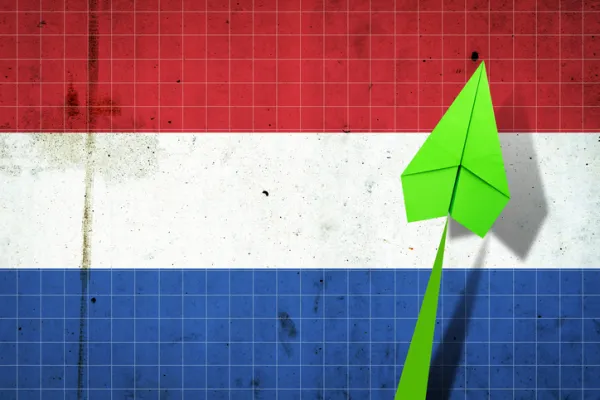August 17, 2010 - Waste Electrical and Electronic Equipment (WEEE), also known as e-Waste, is discarded, surplus, obsolete or broken electrical or electronic devices. While India generates its own e-waste, it also receives e-waste from abroad. Despite its expressed unwillingness to receive e-waste (the import of hazardous waste into India has been banned since 1997), containers after containers continue to arrive. Many developed countries “donate” their used electronic equipment to India, often believing that it is re-used or responsibly recycled. In actuality, children have emerged as involuntary experts in “recycling” of e-waste — breaking down motherboards to obtain precious metals, clearly unaware of the toxic substances they are coming in contact with.
Currently, more than 95 percent of e-Waste in India is recycled through the informal sector. This poses significant health threats that could be avoided by a formalized recycling program. For example, Cathode Ray Tubes (CRTs) have high content of carcinogens such as lead, barium, phosphor and other heavy metals. In the informal sector, the innards of electronic hardware, like CRTs, are torn, crushed, burnt, and boiled in acids to extract copper or other precious metals, releasing harmful toxins directly into the surrounding environment. This causes long term effects on soil, air, and groundwater quality as well as life-threatening health circumstances for workers. These risks can be overcome by recycling CRTs in a controlled environment which removes the direct impact on workers and the environment.
In recent years, many hardware multinationals as well as Indian companies have dealt with public scrutiny for producing computers with toxic PVC (Polyvinyl Chloride) and BFRs (Brominated Flame Retardants). Public outcry against the usage of these substances has resulted in several companies taking the initiative to limit their usage of these materials. For example, Apple has successfully eliminated the largest applications of PVC and BFRs in their products, and is close to eliminating these chemicals altogether. Other companies have incorporated recycling into computer hardware production by utilizing recycled plastics. Some responsible companies are also taking back old computers (through exchange schemes or simply calling back their products which have reached the end of their lifecycle), to dispose them in a responsible manner or reuse certain components.
But this is where electronic hardware companies worldwide could do so much more. For example: offering recycling centers within their stores or in close proximity to where their products are sold. Or, adding a little onto the price so that we, as responsible consumers, take some of the cost for a safe disposal of our products.
As public outcry on the negative impacts of e-waste grows, increasing numbers of consumers would be willing to pay a little more for a PC, knowing that the buy, unlike today, won´t have any negative impact — either on people or on the environment.
In response to this outcry, the Indian government is planning to enact specific rules that will make electrical and electronic equipment producers responsible for the collection and appropriate disposal of e-Waste generated at the end of the life cycle of their products.
A draft version of e-Waste regulation, called the Management and Handling Rules, was published on the Ministry of Environment and Forests’ website on May 14, 2010. This legislation will apply to all producers, dealers, collection centres, refurbishers, dismantlers, recyclers, auctioneers, consumers or bulk consumers that are involved in the manufacture, sale, purchase, or processing of electrical and electronic equipment or components.
(Note: The preliminary regulations can be found at: http://www.moef.nic.in/downloads/public-information/Draft%20E-waste-Rules%2030.3.10.pdf.)
In light of this new legislation and the continued public outrage at the impacts of e-Waste, companies will find it to be beneficial to responsibly handle e-Waste. Options include: promotion of formalized recycling programs, limiting usage of harmful chemicals in manufacturing electronics, exchange schemes for consumers to return used products to producers, and other innovative processes for reducing the production of e-waste.
There are some start ups who are trying to address these issues by deploying cutting edge technology to recycle waste in integrated automatic plants, however they are facing the usual challenges of starting green field ventures in a nascent industry whose benefits are less understood in India. If they scale up well, India can show the way to dealing with this problem sustainably.
Helen Sjölund is a Sustainability Analyst with Solaron Sustainability Services. Helen´ background is in language and art studies at Kaplanskolan in Skellefteå and Académie des arts in Gothenburg. She has also completed course work on the culture, politics, history, and economics of Latin America. Helen has lived in numerous countries, including Scotland, India, Canada, Guatemala, and the United Arab Emirates, and has a strong understanding of communicating and operating within diverse cultures. She is based in Dubai and covers the Middle East and Asia regions. Solaron ( www.solaron.in ) is a niche Sustainability / ESG research firm with a global team of 60+ Analysts present across several Emerging markets like India, Brazil, China, UAE, Mexico, Russia, Eastern Europe and Africa.
Monica Mazilu is a Sustainability Analyst with Solaron Sustainability Services. Monica’s background is in Service Economies and she currently holds a Masters degree in this field. At Solaron, Monica is tracking the evolution of Indian Electronic Equipment Industry, in addition to her other duties as an analyst. Solaron ( www.solaron.in ) is a niche Sustainability / ESG research firm with a global team of 60+ Analysts present across several Emerging markets like India, Brazil, China, UAE, Mexico, Russia, Eastern Europe and Africa.






